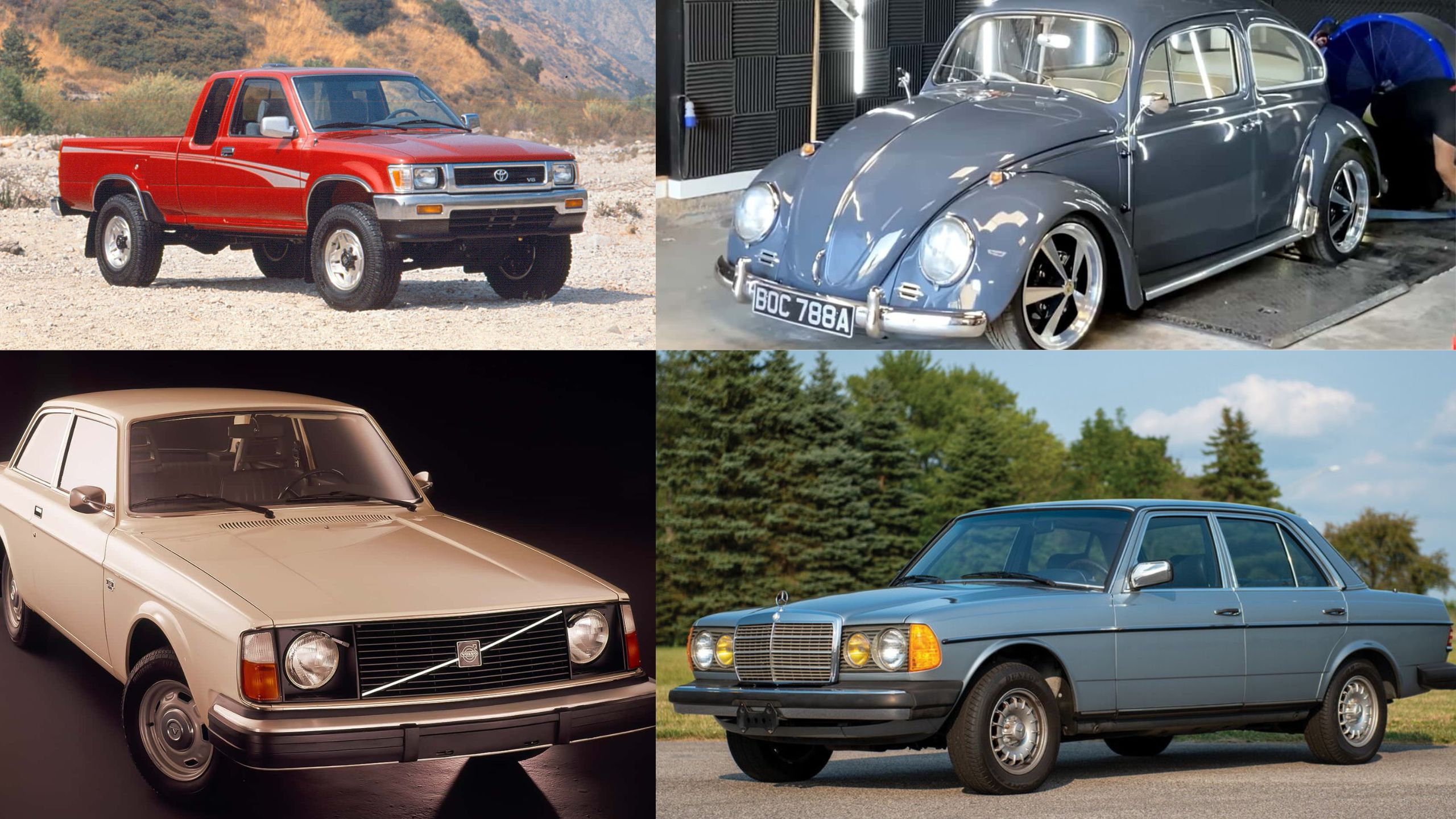In today’s increasingly complex automotive world, finding vehicles that can be repaired with basic tools is becoming rarer. Modern cars often require specialized diagnostic equipment and proprietary software to address even minor issues.
However, some models still embrace simplicity in their design, making them accessible to DIY mechanics and home garage enthusiasts. The following list highlights 12 vehicles known for their repair-friendly characteristics.
These cars feature straightforward mechanical systems, accessible components, ample engine bay space, and robust online communities that provide support through forums and tutorials.
Whether you’re a beginner looking to learn automotive repair or an experienced mechanic seeking a project vehicle, these models offer approachable platforms that won’t require expensive specialty tools or computer systems for most maintenance and repair tasks.
From classic workhorses to more recent models with thoughtful engineering, these vehicles represent the sweet spot of reliability, simplicity, and repairability. Each entry explores the specific attributes that make these cars stand out as DIY-friendly options in an era of increasingly complex vehicle design.
1. Toyota Corolla (1990s-Early 2000s Models)
The Toyota Corolla from the 1990s through the early 2000s stands as a paragon of mechanical simplicity and reliability in the automotive world. These models particularly the seventh (1993-1997) and eighth (1998-2002) generations feature straightforward engineering that makes them exceptionally DIY-friendly.
At their heart, most of these Corollas run on the legendary 1.6L or 1.8L four-cylinder engines that are renowned for their durability and straightforward design.
What makes these Corollas particularly appealing to home mechanics is their logical component layout. The engine bay offers ample space to work, with most worn items and service points easily accessible without special tools.
Basic maintenance tasks like oil changes, spark plug replacements, and brake service require nothing more complicated than socket sets, wrenches, and screwdrivers. Even more involved repairs, such as alternator replacement or starter motor service, can be accomplished with basic hand tools.
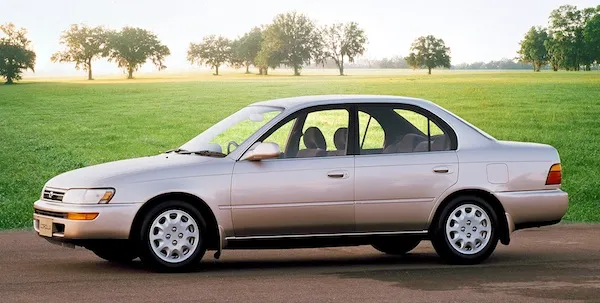
The fuel injection systems on these models remain refreshingly uncomplicated compared to modern vehicles, and many engine sensors can be tested with a basic multimeter.
The suspension components consisting primarily of MacPherson struts in front and a simple torsion beam arrangement in the rear are straightforward to diagnose and replace when necessary.
Another significant advantage is the wealth of repair information available. Factory service manuals are readily available, and countless online tutorials exist for every repair scenario. The massive production numbers mean that affordable parts are plentiful, whether new, aftermarket or from salvage yards.
These Corollas also predate the era of extensive computer integration, meaning there are fewer electronic systems to troubleshoot. While they do have an Engine Control Module (ECM), its functions are more basic than modern equivalents, and many repairs can be completed without needing to interface with the car’s computer systems.
For anyone looking to learn automotive repair fundamentals, these Toyota Corollas offer an ideal learning platform reliable enough to serve as daily transportation while simple enough to fix in a home garage with basic tools when maintenance is required.
2. Honda Civic (1990s-Early 2000s Models)
The Honda Civic from the 1990s through the early 2000s represents a sweet spot in automotive design where engineering excellence meets mechanical accessibility.
These models particularly the fifth (1992-1995), sixth (1996-2000), and early seventh (2001-2005) generations have earned cult status among DIY mechanics for good reason.
The centerpiece of these Civics is their remarkably efficient and durable engine lineup, including the D-series and B-series VTEC engines that deliver impressive performance while maintaining ease of maintenance.
What distinguishes these Civics in the repair-friendly category is their thoughtful engineering. Honda designed these vehicles with service in mind, placing components in logical positions with adequate clearance for hand tools.
The engine bay layout is intuitive, with critical maintenance points like the oil filter, spark plugs, and air filter easily accessible. Basic maintenance requires nothing more than common socket sets, combination wrenches, and screwdriver tools that any beginner mechanic would have in their collection.
The electrical systems in these Civics strike an ideal balance between functionality and simplicity. While they offer features like power windows, locks, and climate control, the wiring is straightforward enough that electrical problems can be diagnosed with basic tools like a multimeter.
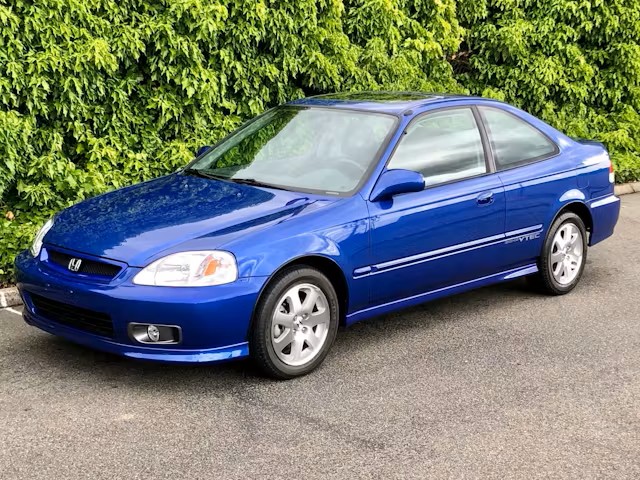
The engine management computers are sophisticated for their era but not overly complex, and many functions can still be tested without specialized diagnostic equipment.
This wealth of information makes tackling even intimidating jobs like timing belt replacement more approachable for novice mechanics. The suspension systems featuring double wishbones on many models provide excellent handling while remaining serviceable with basic tools.
Even transmission work, often considered advanced, becomes more approachable on these models due to their logical design and abundant documentation.
The availability of affordable parts, both new and used, further enhances the appeal of these Civics for home repairs. The massive production numbers and enthusiast following have created a robust aftermarket, ensuring parts availability for decades to come a crucial factor for anyone planning to maintain these vehicles long-term.
3. Jeep Cherokee XJ (1984-2001)
The Jeep Cherokee XJ has achieved legendary status among DIY mechanics for its rugged simplicity and exceptional accessibility. Produced from 1984 to 2001, this iconic SUV represents a perfect convergence of durability, straightforward design, and repair-friendly architecture.
At its core, most XJ Cherokees feature the renowned 4.0-liter inline-six engine an exceptionally resilient powerplant with a design that prioritizes accessibility and serviceability over complexity.
What makes the Cherokee XJ particularly appealing for home mechanics is its body-on-frame construction and generous clearance, allowing easy access to most components without specialized equipment.
The engine bay is spacious enough to accommodate even larger hands, with most maintenance points visible and accessible. Basic repairs like oil changes, spark plug replacements, and belt service require nothing more than standard socket sets, wrenches, and screwdrivers.
The XJ’s electrical system represents a sweet spot in automotive design sophisticated enough to provide necessary functions but simple enough that most circuits can be tested with a basic multimeter.

While the Cherokee does have an Engine Control Unit (ECU), it’s far less complex than modern systems, and many repairs can be completed without interfacing with the computer.
The pre-CAN bus architecture means that electronic issues can typically be diagnosed through conventional troubleshooting methods rather than requiring proprietary scanners.
The Cherokee’s suspension system featuring a simple coil spring setup in front and leaf springs in the rear is remarkably straightforward to service. Even significant repairs like steering box replacement, ball joint service, or differential maintenance can be accomplished in a home garage with basic tools.
The brake system follows conventional designs with easily accessible components that can be serviced with standard tools. Perhaps most valuable to DIY mechanics is the extensive community support and documentation available for the XJ. Factory service manuals are comprehensive, and countless enthusiast forums provide detailed repair guides with step-by-step photos.
The massive production numbers mean that parts availability remains excellent, with affordable replacement components available through both OEM and aftermarket channels.
The Cherokee’s longevity and popularity among off-road enthusiasts ensure that knowledge about these vehicles continues to circulate widely, making them one of the most well-documented and repair-friendly vehicles ever produced.
For anyone wanting to learn vehicle maintenance while owning a capable and reliable SUV, the Jeep Cherokee XJ represents an ideal platform that rewards mechanical curiosity with relative ease of repair.
4. Ford F-Series (1980s-1990s Models)
The Ford F-Series trucks from the 1980s and 1990s represent a high-water mark for repairability in American automotive design. These workhorses spanning the seventh (1980-1986), eighth (1987-1991), and ninth (1992-1996) generations were engineered during an era when serviceability remained a primary design consideration.
The engine lineup in these trucks, particularly the venerable 4.9L (300 cubic inch) inline-six and the robust 5.0L V8, feature straightforward designs with generous spacing between components.
What distinguishes these F-Series trucks in terms of DIY-friendliness is their perfect balance of capability and simplicity. The ladder frame construction and rear-wheel/four-wheel drive layout mean that major components are isolated and more easily accessible compared to unibody vehicles.
The engine bay offers ample space to work, with most service points visible and reachable without removing unrelated components. Basic maintenance tasks like oil changes, filter replacements, and belt service require nothing more than common socket sets, wrenches, and pliers.
The electrical systems in these trucks reflect pre-computerization simplicity at its finest. While later models do incorporate Engine Control Modules (ECMs), they handle relatively basic functions and many repairs can be completed without specialized diagnostic equipment.
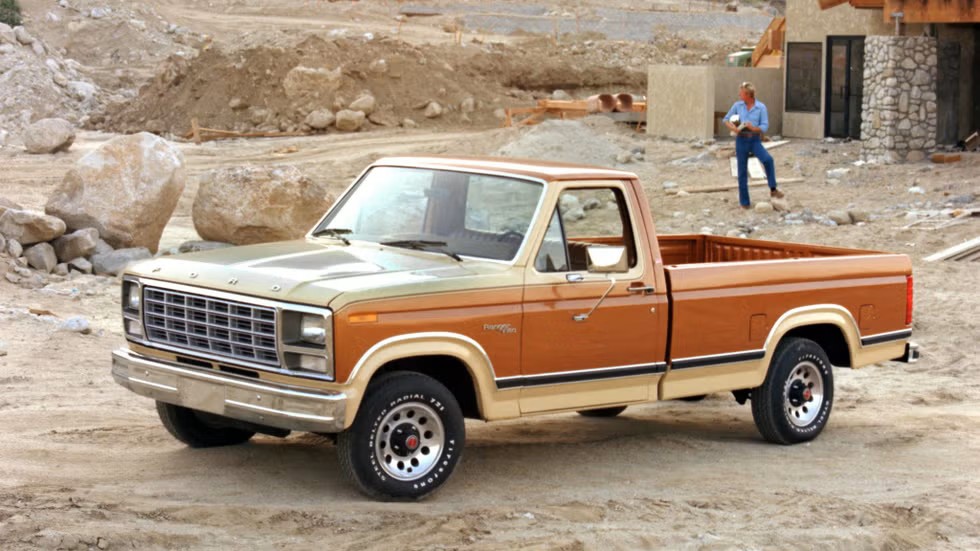
Most circuit issues can be diagnosed using a simple multimeter and a good wiring diagram. The distributors, alternators, and starters are easily accessible and replaceable with basic hand tools.
The suspension and steering components on these F-Series trucks exemplify industrial-grade simplicity. The Twin I-Beam front suspension system, while unusual, is remarkably durable and serviceable with common tools.
Rear leaf springs can be maintained or replaced without specialized equipment, and even major repairs like differential service remain accessible to home mechanics with basic tools.
These trucks benefit from enormous production numbers, creating an ecosystem of affordable parts through both OEM and aftermarket channels. Salvage yards remain well-stocked with these vehicles, offering budget-friendly repair options for nearly every component.
The popularity of these trucks has generated a wealth of repair documentation, including detailed factory service manuals and numerous aftermarket repair guides.
Perhaps most importantly, these F-Series trucks were designed in an era when mechanical transparency was valued. Systems follow logical design principles, and troubleshooting typically proceeds in straightforward, linear ways.
For anyone seeking a capable truck that can be maintained and repaired with basic tools in a home garage, these Ford F-Series models represent an ideal blend of utility, durability, and mechanical accessibility.
Also Read: 10 Cars Every Dog Owner Should Consider For Convenient Travel
5. Volkswagen Beetle (Air-Cooled Models)
The air-cooled Volkswagen Beetle, produced from 1938 through 2003 (in Mexico), stands as perhaps the ultimate expression of mechanical simplicity and repair accessibility in automotive history.
This iconic vehicle was deliberately designed by Ferdinand Porsche to be affordable, durable, and crucially serviceable by owners with minimal tools and mechanical knowledge. The heart of the Beetle’s DIY-friendly nature lies in its air-cooled flat-four engine, a marvel of straightforward engineering that eliminated the complexity of water cooling systems.
What makes the air-cooled Beetle exceptional for home mechanics is its fundamentally logical design philosophy. The entire rear-mounted engine/transmission unit can be removed with nothing more than basic hand tools a process owners affectionately call the “drop plate” method.
This modular approach means major components can be accessed without specialized equipment. Basic maintenance tasks like oil changes, valve adjustments, and spark plug replacements require only common socket sets, feeler gauges, and screwdrivers.
The Beetle’s electrical system represents minimalism at its finest. The 6-volt (early models) or 12-volt (later models) system contains only essential circuits, making electrical troubleshooting remarkably straightforward with a basic test light or multimeter.

With no electronic engine management system whatsoever, all functions remain purely mechanical or simple electrical circuits that can be diagnosed through conventional methods.
The suspension system featuring torsion bars rather than conventional springs is ingeniously simple yet effective. Front end components like ball joints and tie rods are easily accessible, while the rear swing axle design provides surprising durability with minimal maintenance requirements. The drum brake systems (disc brakes on later models) follow conventional designs that any home mechanic can service with basic tools.
Perhaps the Beetle’s greatest asset for DIY repair is the unparalleled documentation and community support available. Countless repair manuals notably including John Muir’s iconic “How to Keep Your Volkswagen Alive: A Manual of Step-by-Step Procedures for the Compleat Idiot” provide detailed, accessible guidance for virtually every repair scenario.
The enormous production numbers (over 21 million units) have created an ecosystem of affordable parts through both OEM and aftermarket channels.
The Beetle’s design philosophy celebrates mechanical transparency, with systems that follow intuitive principles and communicate their status clearly to attentive owners.
This philosophical approach to engineering has made the air-cooled Beetle not just a transportation device but also an ideal educational platform that has taught generations of enthusiasts the fundamentals of automotive repair, all with nothing more than a basic set of tools and a willingness to learn.
6. Toyota Pickup/Tacoma (1980s-Early 2000s)
The Toyota Pickup (later renamed Tacoma in North America) from the 1980s through the early 2000s has earned legendary status for combining exceptional reliability with remarkable repair simplicity.
These trucks particularly the fourth (1983-1988), fifth (1989-1994), and sixth (1995-2004) generations feature engineering that prioritizes durability and serviceability above all else.
At the heart of most of these trucks is either the 22R/22RE four-cylinder engine or the 3.0L V6, both renowned for their bulletproof construction and straightforward design.
What distinguishes these Toyota trucks in terms of repair-friendliness is their deliberate engineering philosophy that favors mechanical simplicity over technological complexity. The engine bay layout provides generous access to most components, with worn items and service points positioned with maintenance in mind.
Basic service procedures like oil changes, filter replacements, and belt service require nothing more sophisticated than common socket sets, combination wrenches, and screwdrivers.
The fuel and ignition systems on these trucks represent an ideal balance of reliability and simplicity. Earlier carbureted models can be serviced with basic hand tools, while the transition to electronic fuel injection maintained accessibility while improving performance and efficiency.
Most engine sensors can be tested with a basic multimeter, and the relatively straightforward Engine Control Unit (ECU) handles essential functions without the complexity of modern systems.
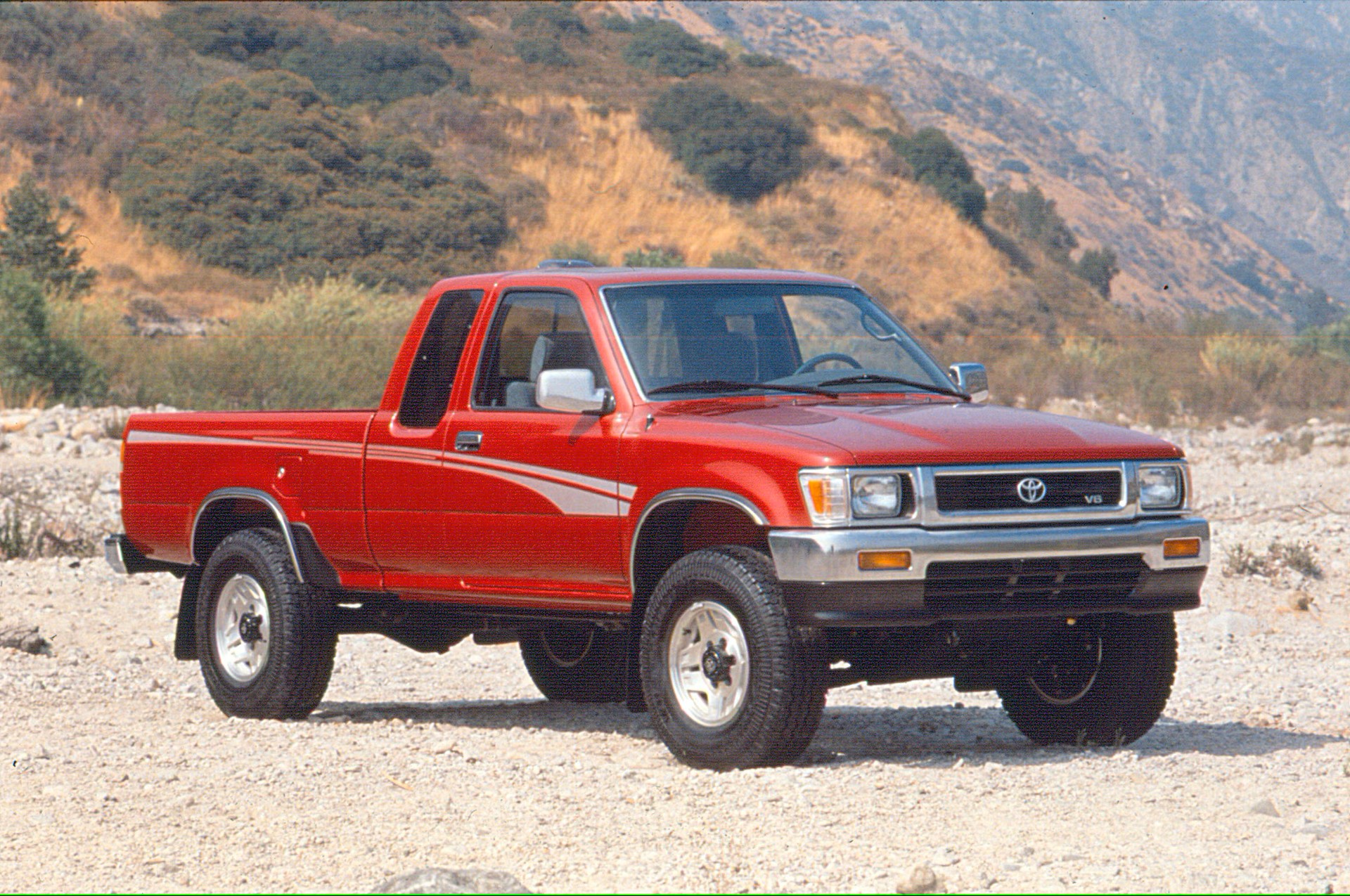
The suspension and drivetrain components exemplify Toyota’s commitment to serviceability. The rugged leaf spring rear suspension can be maintained or replaced with basic tools, while the front suspension whether independent or solid axle depending on the model follows conventional designs that home mechanics can easily comprehend and service.
Four-wheel drive components, including transfer cases and differentials, are robustly engineered for longevity but remain accessible when maintenance is required.
The global production numbers ensure that affordable parts remain widely available through both OEM and aftermarket channels. Perhaps most significantly, these Toyota trucks come from an era when mechanical transparency was still valued in automotive design.
Systems follow logical principles, and troubleshooting typically proceeds in intuitive, sequential ways. For anyone seeking a capable, reliable truck that can be maintained indefinitely with basic tools in a home garage, these Toyota pickups represent the gold standard vehicles that reward mechanical curiosity with relative ease of repair and legendary durability.
7. Volvo 240 Series (1975-1993)
The Volvo 240 Series, produced from 1975 to 1993, represents Scandinavian engineering at its most pragmatic and accessible. These boxy Swedish sedans and wagons were designed with a philosophy that prioritized functionality, durability, and crucially for DIY mechanics serviceability.
The heart of most 240s is the reliable B21/B23/B230 inline-four engine, a powerplant designed with impressive mechanical simplicity despite offering features like overhead cams and fuel injection on later models.
What makes the 240 Series particularly appealing to home mechanics is its thoughtfully organized engine compartment and logical component layout.
The generous engine bay provides excellent access to most systems, with service points positioned for relatively easy maintenance. Basic tasks like oil changes, filter replacements, and spark plug service require nothing more sophisticated than common socket sets, combination wrenches, and screwdrivers. Even more involved procedures like timing belt replacement remain accessible to DIY enthusiasts with basic tools.
The electrical systems in the 240 Series strike an ideal balance between functionality and simplicity. While these cars incorporate features like fuel injection and various comfort elements, the wiring follows logical paths and functions can typically be diagnosed with a basic multimeter and proper documentation. The relatively straightforward Electronic Control Unit (ECU) handles essential functions without the complexity found in modern vehicles.
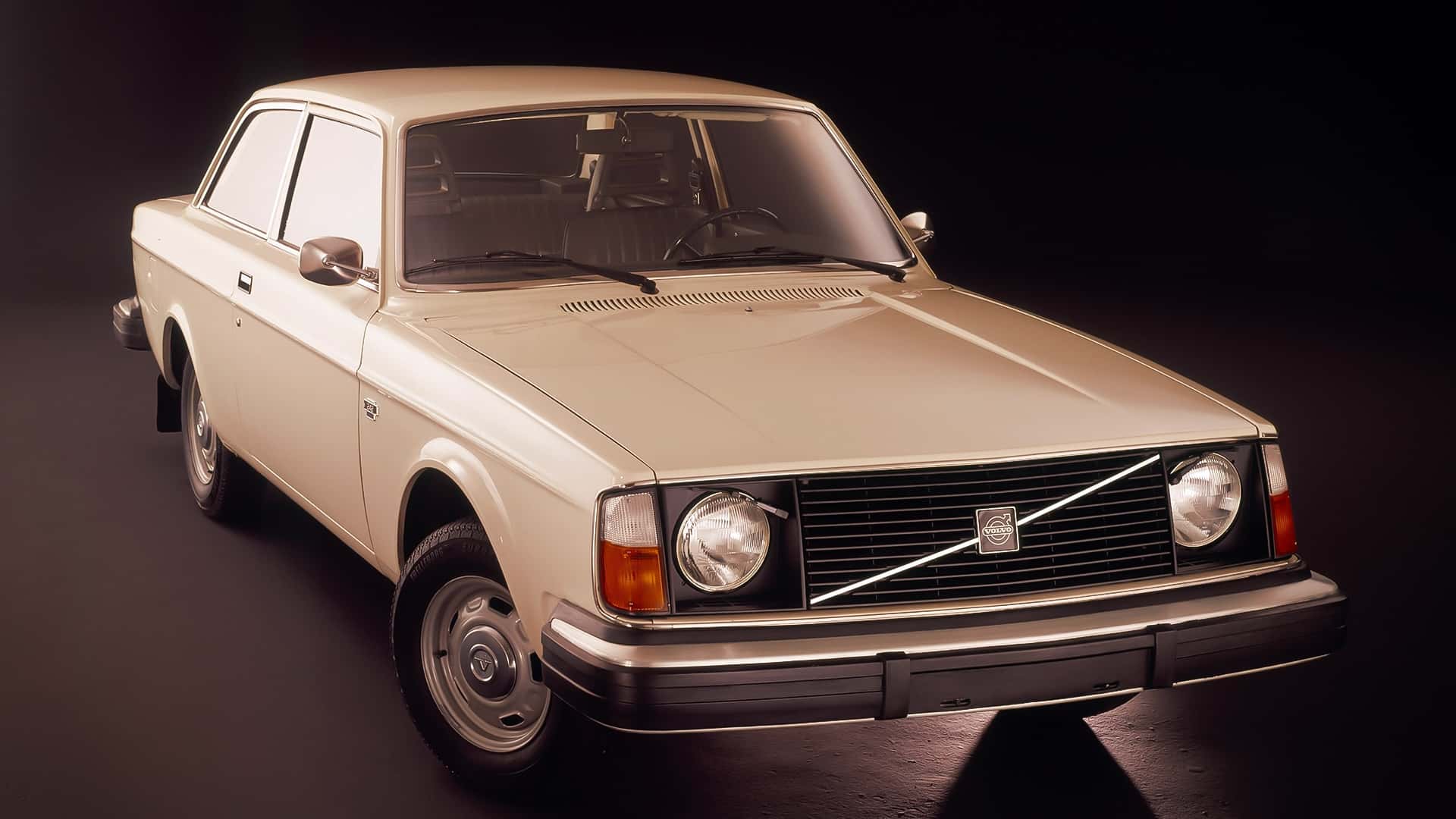
The 240’s suspension system features MacPherson struts in front and a solid rear axle with coil springs a design that provides excellent durability while remaining accessible for home repairs.
Brake components follow conventional designs that any motivated DIY mechanic can service with basic tools. Even the transmission whether manual or automatic is more straightforward to maintain compared to more modern equivalents.
These Volvos benefit from exceptional documentation, including comprehensive factory service manuals and numerous enthusiast-created guides.
Perhaps most importantly, the 240 Series comes from an era when mechanical transparency was a virtue in automotive design. Systems follow logical engineering principles, and troubleshooting typically proceeds in intuitive ways.
The car communicates its needs clearly to attentive owners through easily observable symptoms. For anyone seeking a durable, practical vehicle that can be maintained indefinitely with basic tools in a home garage, the Volvo 240 represents an ideal combination of European refinement and DIY-friendly design.
8. Chevrolet/GMC C/K Series Trucks (1973-1987)
The Chevrolet and GMC C/K Series trucks produced between 1973 and 1987 commonly known as the “Square Body” generation represent a high point in American automotive design for DIY repairability.
These iconic trucks were engineered during an era when serviceability remained a fundamental design consideration. The engine lineup, featuring the legendary small-block Chevrolet V8s (305, 350, 400 cubic inches) and inline-six options (250 and 292 cubic inches), offers exceptional accessibility and mechanical simplicity.
What distinguishes these C/K trucks for home mechanics is their body-on-frame construction and thoughtful component layout. The engine bay provides generous working space, with most maintenance points visible and accessible without removing unrelated components.
Basic service procedures like oil changes, ignition system maintenance, and carburetor adjustments require nothing more sophisticated than common socket sets, combination wrenches, and screwdrivers. Even more involved tasks like cylinder head removal remain reasonably straightforward with basic hand tools.
The electrical systems in these trucks epitomize pre-computerization simplicity. Early models feature minimal electronic components, with most electrical functions controlled through straightforward relay and switch circuits that can be easily traced and tested with a basic test light or multimeter.
While later models incorporated more electronic controls, they maintained relative simplicity compared to modern vehicles. Most electrical problems can be diagnosed through conventional troubleshooting methods without specialized equipment.
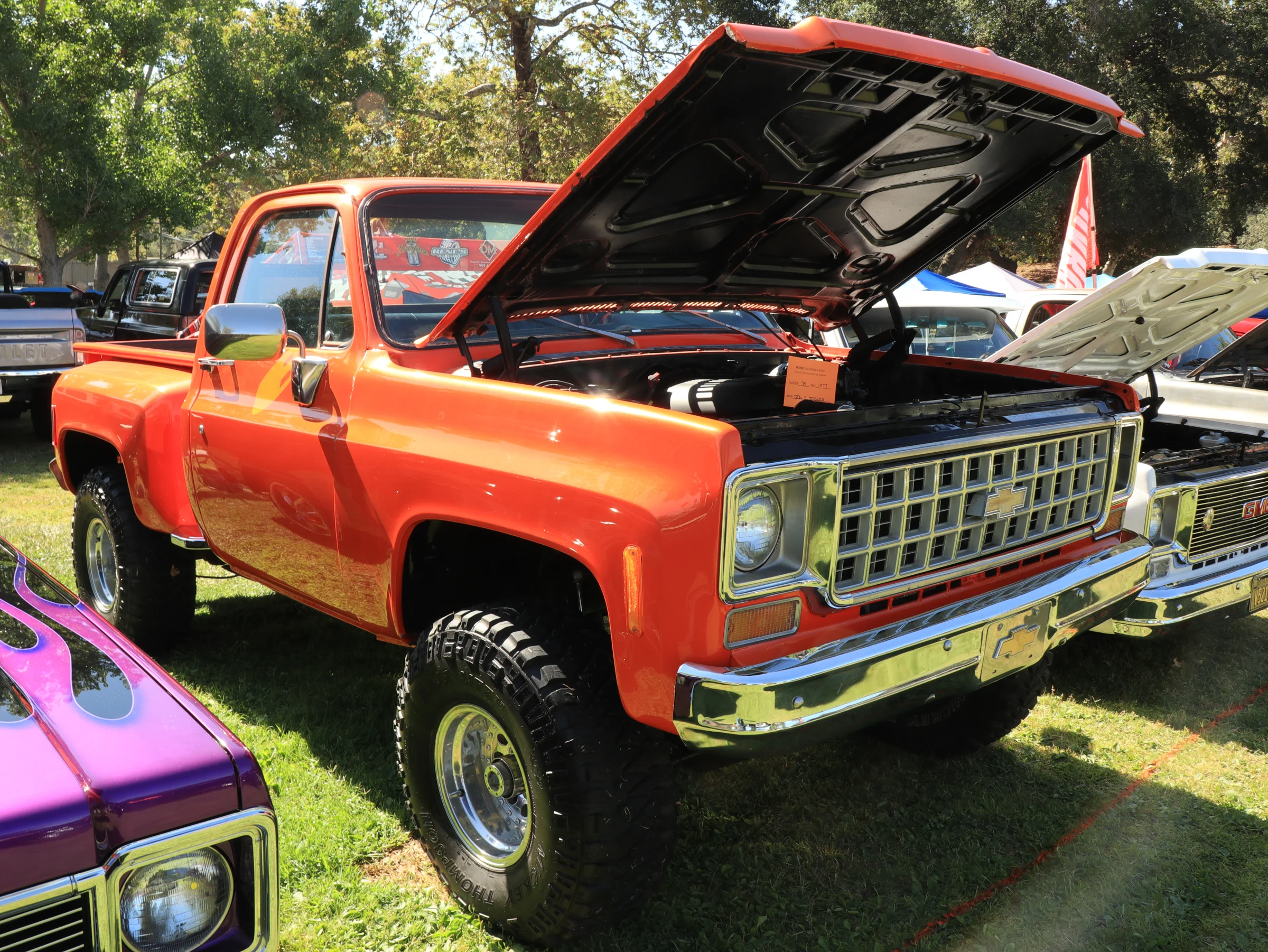
The suspension and drivetrain components exemplify robust simplicity. The leaf spring suspension front and rear (or coil springs, depending on the model) follow conventional designs that home mechanics can easily understand and service. The solid axles, whether two-wheel or four-wheel drive, are straightforward to maintain with basic tools.
The manual and automatic transmissions of this era, while heavy-duty, follow logical designs that make service or rebuilding more approachable than modern equivalents.
These trucks benefit from massive production numbers, creating an ecosystem of affordable parts through both OEM and aftermarket channels. Salvage yards remain well-stocked with these vehicles, offering budget-friendly repair options for nearly every component.
The enduring popularity of these C/K trucks has generated abundant documentation, including detailed factory service manuals and numerous enthusiast-created resources.
Perhaps most significantly, these trucks were designed when mechanical transparency was valued over technological complexity. Systems follow logical engineering principles, and troubleshooting typically proceeds in intuitive ways. For anyone seeking a capable, rugged truck that can be maintained indefinitely with basic tools in a home garage, the 1973-1987 C/K Series represents American automotive engineering at its most DIY-friendly.
9. Mercedes-Benz W123 (1976-1985)
The Mercedes-Benz W123 series, produced from 1976 to 1985, represents German engineering at its most accessible and durable. These mid-size luxury vehicles available as sedans, wagons, and coupes were designed during an era when Mercedes prioritized mechanical robustness and serviceability alongside luxury.
The engine lineup, particularly the OM616/OM617 diesel engines and M102/M110 gasoline powerplants, showcases exceptional engineering with a focus on longevity and maintainability that has helped many examples surpass 500,000 miles.
What makes the W123 particularly appealing to DIY mechanics is its thoughtful engineering approach that emphasizes mechanical logic and accessibility.
Despite its reputation as a luxury vehicle, the W123 follows an orthodox, non-integrated design philosophy where major systems remain distinct and serviceable individually. Basic maintenance tasks like oil changes, filter replacements, and ignition system service require nothing more sophisticated than common socket sets, combination wrenches, and screwdrivers.
The electrical systems in the W123 represent an ideal balance between luxury features and serviceability. While these cars incorporate power windows, central locking, and climate control systems, the wiring follows logical patterns with clear documentation.
Most electrical functions can be diagnosed with a basic multimeter and proper service literature, without requiring proprietary diagnostic equipment. The relative absence of electronic engine management (particularly in diesel models) means that most engine functions remain mechanical and directly observable.
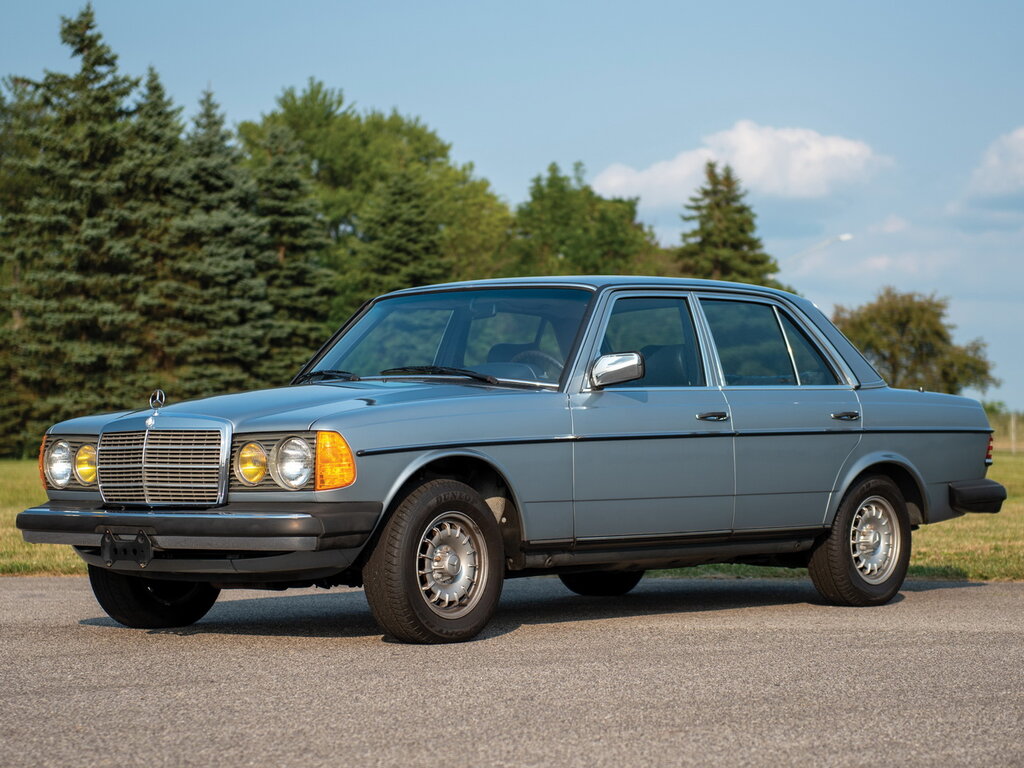
The suspension system featuring double wishbones up front and semi-trailing arms in the rear provides exceptional ride quality while remaining accessible for home repairs.
Suspension bushings, ball joints, and shock absorbers can all be serviced with basic tools, though some operations benefit from simple special tools that can often be fabricated or purchased affordably. Brake components follow conventional designs that any motivated DIY mechanic can service.
The substantial production numbers (over 2.7 million units) mean that parts remain widely available through both OEM and specialist suppliers. Perhaps most importantly, the W123 comes from an era when Mercedes-Benz designed cars to be not just driven but maintained by their owners.
Systems follow logical engineering principles, and troubleshooting typically proceeds in intuitive ways. For anyone seeking a vehicle that combines luxury with DIY-friendly design—a car that can be maintained indefinitely with basic tools in a home garage—the W123 represents an ideal synthesis of German engineering excellence and mechanical accessibility.
10. Subaru Legacy/Outback (1990s Models)
The Subaru Legacy and Outback models from the 1990s particularly the first (1989-1993) and second (1994-1999) generations represent Japanese engineering that skillfully balances mechanical complexity with DIY accessibility.
These vehicles pioneered the crossover concept with their combination of car-like handling and all-weather capability, all while maintaining a repair-friendly design philosophy. At their core, these Subarus feature horizontally opposed “boxer” engines (primarily 2.2L and 2.5L four-cylinders) that, despite their unusual configuration, offer surprising accessibility for many service operations.
What distinguishes these Subaru models for home mechanics is their thoughtful engine bay layout that accommodates the unique boxer engine configuration while still providing access to common maintenance points.
While the horizontally opposed design places some components in less conventional locations, basic maintenance tasks like oil changes, filter replacements, and spark plug service remain achievable with standard socket sets, combination wrenches, and screwdrivers. The top-mounted location of the oil filter on many models is particularly appreciated by DIY mechanics.
The electrical systems in these early Legacy and Outback models reflect the transition era between mechanical simplicity and modern electronic integration.
While they incorporate Engine Control Modules and various comfort features, the systems remain relatively straightforward compared to later models. Most electrical functions can be diagnosed with a basic multimeter and proper documentation, without requiring expensive proprietary tools.

The all-wheel-drive system a defining feature of these vehicles follows a remarkably straightforward design philosophy compared to modern equivalents.
The symmetrical layout provides natural balance, while the mechanical AWD systems (whether automatic or with manually-locking center differentials) can be understood and serviced by motivated DIY mechanics.
The four-wheel independent suspension uses conventional MacPherson struts in front and either struts or multi-link designs in the rear, all serviceable with basic tools.
These Subarus benefit from substantial documentation, including detailed factory service manuals and numerous enthusiast-created resources. The dedicated Subaru community has developed comprehensive guides covering virtually every repair scenario, from basic maintenance to more involved procedures like head gasket replacement a known weakness in some models that has been thoroughly documented by DIY enthusiasts.
Perhaps most significantly, these 1990s Subaru models represent a sweet spot in automotive design sophisticated enough to offer all-weather capability and modern features, yet mechanically transparent enough to be maintained by owners with basic tools.
For anyone seeking a capable, practical vehicle that can handle diverse driving conditions while remaining approachable for home repairs, these Legacy and Outback models offer an ideal combination of versatility and DIY-friendly design.
11. Mazda Miata MX-5 (NA/NB Generations, 1989-2005)
The first two generations of the Mazda Miata MX-5 the NA (1989-1997) and NB (1998-2005) have earned cult status among enthusiasts not just for their driving dynamics but also for their exceptional DIY-friendliness.
These lightweight roadsters were engineered with a philosophy that prioritized mechanical purity and accessibility alongside performance. At their heart is a series of four-cylinder engines (1.6L and 1.8L depending on model year) that exemplify straightforward design with relatively few electronic complexities compared to modern counterparts.
What makes these early Miatas particularly appealing to home mechanics is their thoughtfully designed engine bay layout that provides excellent access to most components despite the car’s compact dimensions.
The longitudinally-mounted engine sits well back in the chassis for ideal weight distribution, while still allowing access to maintenance points without specialized tools. Basic service procedures like oil changes, timing belt replacement, and spark plug service require nothing more sophisticated than common socket sets, combination wrenches, and screwdrivers.
The electrical systems in these Miatas strike an ideal balance between functionality and simplicity. While they do incorporate Engine Control Units and various comfort features, the wiring follows logical organization with clear documentation.
Most electrical functions can be diagnosed with a basic multimeter and proper service literature, without requiring expensive proprietary diagnostic equipment. The pop-up headlights on NA models, while charming, do add some complexity but remain serviceable with basic tools.
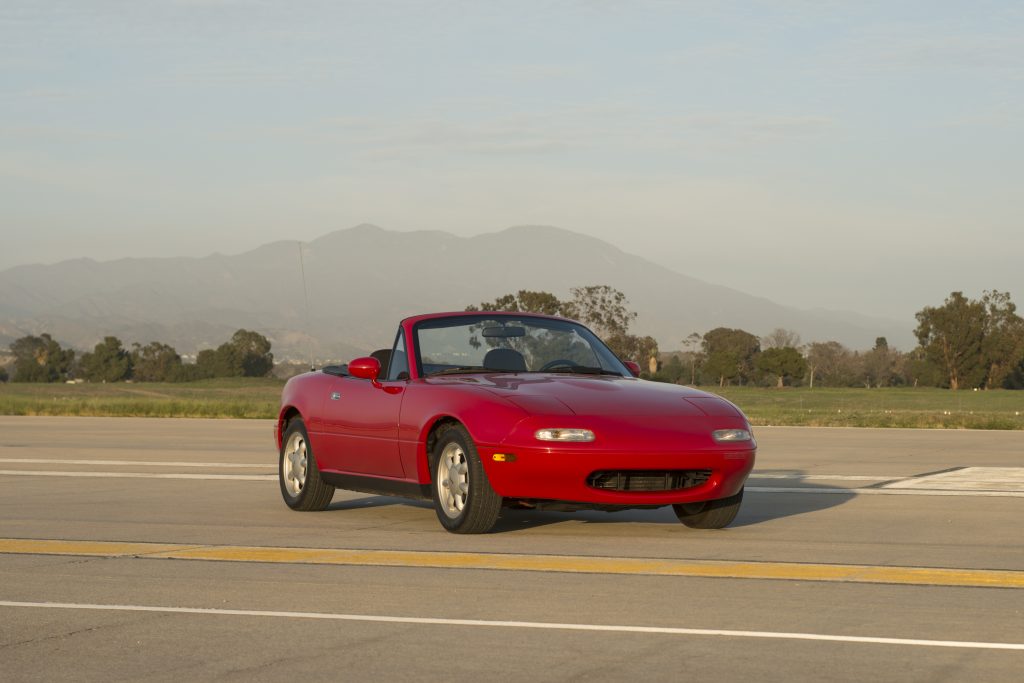
The suspension system a double-wishbone design at all four corners provides exceptional handling characteristics while remaining remarkably accessible for service and modification.
Suspension components, bushings, and brakes follow conventional designs that any motivated DIY mechanic can service. Even more involved procedures like subframe removal become manageable in a home garage setting with basic tools and proper documentation.
These Miatas benefit from exceptional community support, including detailed factory service manuals and countless enthusiast-created resources.
The massive global following these cars have developed has generated comprehensive documentation covering virtually every repair scenario, from basic maintenance to performance modifications. The substantial production numbers ensure that parts remain widely available through both OEM and specialty suppliers.
Perhaps most importantly, these early Miatas were designed in an era when sports cars could still prioritize mechanical transparency alongside performance. Systems follow logical engineering principles, and troubleshooting typically proceeds in intuitive ways.
For anyone seeking an engaging, reliable sports car that can be maintained and modified indefinitely with basic tools in a home garage, the NA and NB Miata generations represent an ideal synthesis of driving excitement and DIY-friendly design.
12. Ford Crown Victoria/Mercury Grand Marquis (1992-2011)
The Ford Crown Victoria and its Mercury Grand Marquis twin, particularly those produced between 1992 and 2011, represent perhaps the last great example of traditional American full-size sedan engineering designed with repairability in mind.
These venerable rear-wheel-drive sedans, built on the Ford Panther platform, were engineered during an era when serviceability remained a primary design consideration. At their heart is the remarkably durable 4.6L modular V8 engine, positioned longitudinally with generous access from above a layout increasingly rare in modern vehicles.
What distinguishes these full-size Fords for DIY mechanics is their body-on-frame construction and traditional front-engine, rear-drive layout. The engine compartment provides excellent working space, with most maintenance points visible and accessible without specialized tools.
Basic service procedures like oil changes, spark plug replacements, and belt service require nothing more sophisticated than common socket sets, combination wrenches, and screwdrivers. Even more involved tasks like intake manifold removal remain straightforward with basic hand tools.
The electrical systems in these vehicles reflect a transitional era in automotive design. While they incorporate Engine Control Modules and various comfort features, the systems remain relatively straightforward compared to modern vehicles.
Most electrical functions can be diagnosed with a basic multimeter and proper documentation, without requiring expensive proprietary diagnostic equipment. The modular design approach extends to electrical components, with many elements designed for easy removal and replacement.

The suspension system a double-wishbone front design paired with a solid rear axle combines reasonable handling characteristics with exceptional durability and straightforward serviceability.
Suspension components, steering elements, and brakes follow conventional designs that any motivated DIY mechanic can service. The robust 4R70W automatic transmission, while complex internally, is at least accessible for fluid service and external adjustments without specialized tools.
These vehicles benefit from massive production numbers particularly due to their popularity as police and taxi fleets creating an ecosystem of affordable parts through both OEM and aftermarket channels.
Salvage yards remain well-stocked with these models, offering budget-friendly repair options for nearly every component. The long production run with minimal fundamental changes means that repair knowledge and parts interchangeability remain excellent across model years.
Perhaps most significantly, these Panthers were designed in an automotive era that valued mechanical transparency and longevity. Systems follow logical engineering principles, and troubleshooting typically proceeds in intuitive ways.
For anyone seeking a spacious, comfortable sedan that can be maintained indefinitely with basic tools in a home garage, the Crown Victoria and Grand Marquis represent perhaps the last true examples of traditional American engineering philosophy cars designed to be not just driven but also repaired by their owners.
Also Read: 12 SUVs Built for Comfortable Long Highway Commutes

